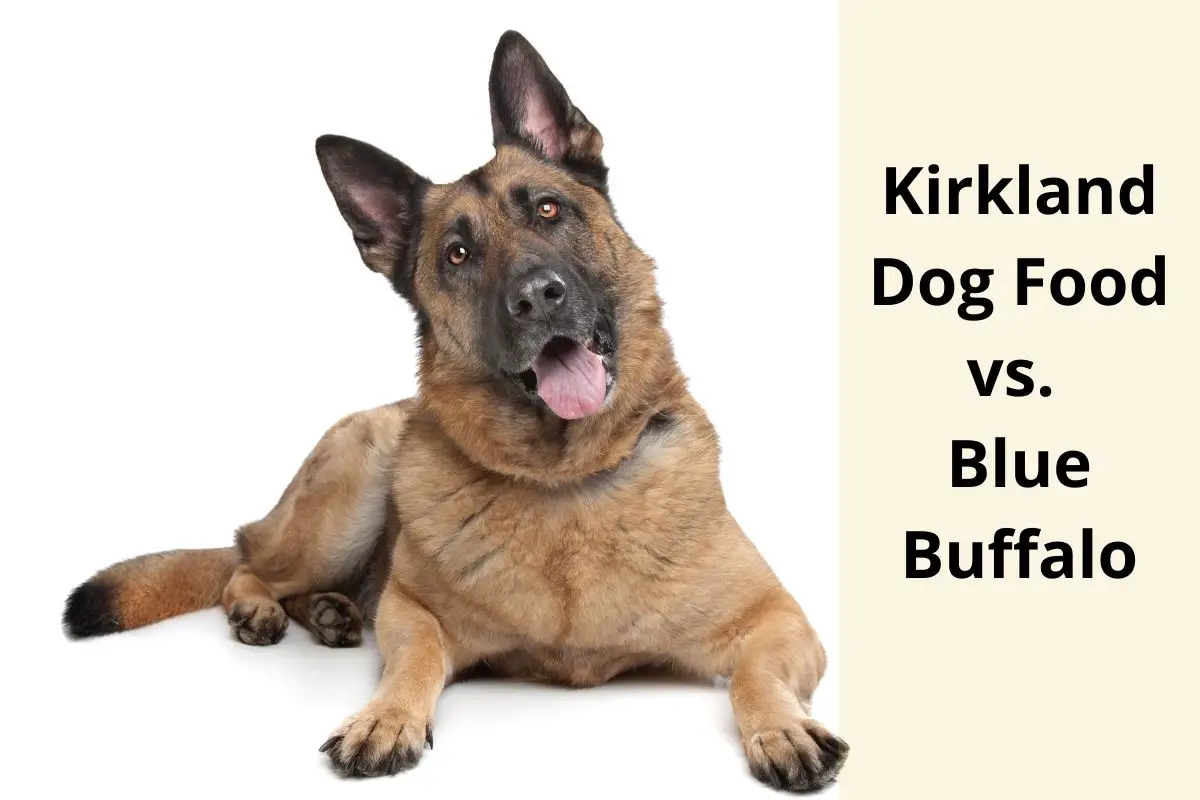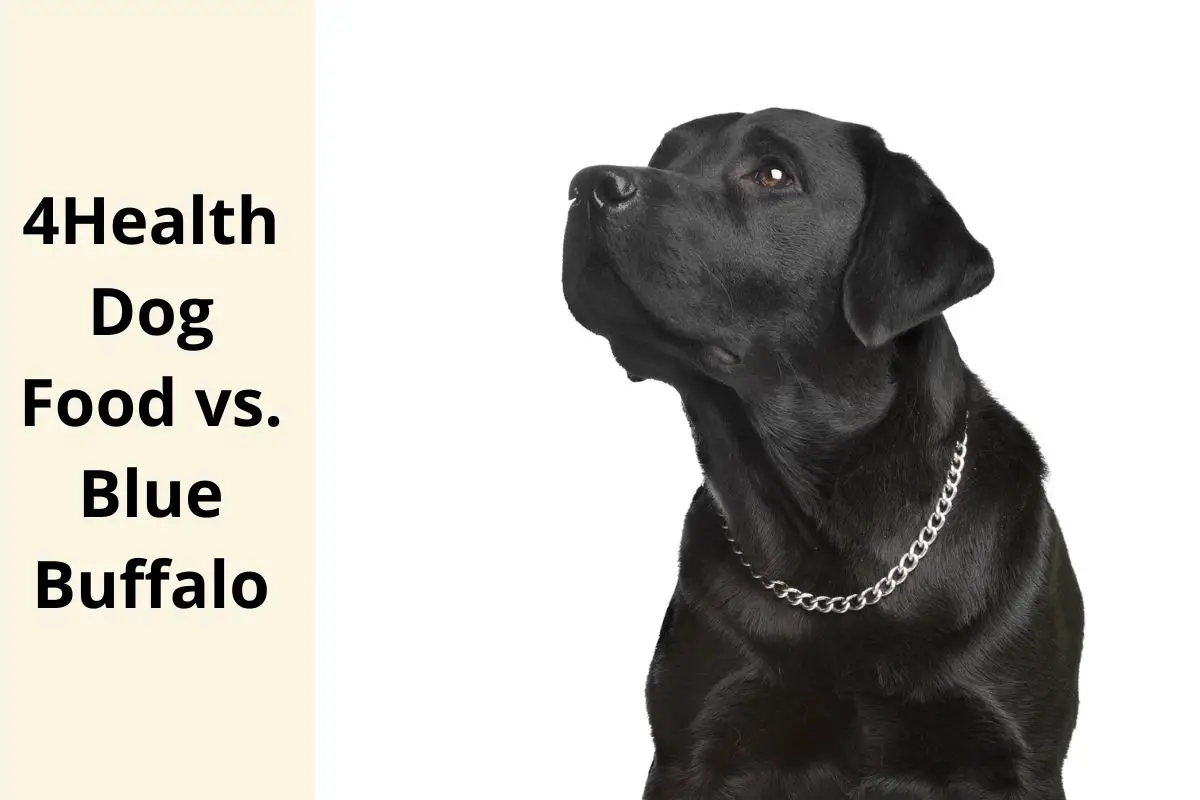This post contains affiliate links.
You love your Maltese dog and want to provide them with the very best. You take them on walks to give them extra exercise, you play with them to keep their energy worn out, and you give them all the love and attention they deserve. Picking out the right food, and deciding between kibble and wet dog food, can be important to keeping your dog healthy today and in the future.
Kibble is best for your Maltese dog because it is easier on the digestive tract, provides all the nutrition necessary, and has a hard surface to clean off the teeth. Many dogs prefer wet food over kibble, but wet dog food should be reserved for special occasions or mixed into the kibble.
This article will look at the similarities and differences between wet dog food and kibble to help you determine which is best for your Maltese dog, while exploring some of the benefits of each. Read on to find out whether you should consider a grain-free diet for your dog and know some of the best dog food options for your Maltese.
Table of Contents
Is Wet Food or Kibble Better?
What your puppy, any breed, eats is going to have a big impact on their health. Not only will this affect how they do today and tomorrow, but years down the road. While your goal is to help your puppy enjoy all their meals, you still need to make sure they get every nutrient they need to keep their bodies healthy.
You will quickly notice that if you give your dog a choice, they will be more likely to take the wet food over any dry. The dry food may be full of nutrients and good for them, but it is harder to chew, and wet food often tastes a bit better.
While wet food is a good thing to give your Maltese occasionally, if you choose to give the dog only wet food, then they will have trouble with runny bowels. This can make them really uncomfortable and hard to work with. This is why dry kibble is often the better choice.
The dry kibble has a number of benefits as well. For example, in addition to preventing irritable bowel syndrome in your dog, the dry kibble is good for the teeth and gums of your dog. This doesn’t mean that you can never give your dog wet food. Mixing it with some dry food, as long as they are the same brand is good.
If your dog is struggling with eating kibble or is a picky eater, then try warming it up. The microwave will be fine for doing this but only do small increments at a time, so it doesn’t get too hot for your kid.
For microwaving the food, you need to stir it around a bit to distribute the heat as much as possible. Check the temperature too to make sure that it isn’t too hot or your dog will not want to eat it at all.
Both types of dog food are beneficial to your Maltese. It is best to stick mostly to a diet of dry kibble because there are a few more benefits. Adding in some wet food on occasion is not going to hurt the dog and can give them a nice treat occasionally.
Reasons to Choose Dry Kibble
There are a number of reasons why dry kibble is a great choice for almost any dog, but especially for your Maltese. They may prefer to eat wet food because it is easier to chew and tastes better, but for their health, it is often best to go with dry kibble. Some of the benefits you will enjoy with dry kibble includes:
High in Nutrients
All high-quality foods available for dogs, whether we look at dry kibble or wet food, will have certain nutritional benefits that are good for your dog. Just like humans, there are important nutrients each dog needs to help them grow strong and healthy.
No matter what type of food you pick for the dog, you need to check that it has plenty of vitamins and minerals, along with fats, proteins, and carbs. Each dog is a little different, but most small breed dog foods will be formulated to meet the special nutritional needs of your Maltese.
Dry kibble will provide all of the nutrients that your dog needs. Pick the food type that goes with the age of your dog to help support their specific needs through each stage. Most dog food manufacturers will include several options to help with this.
Easier to Purchase
Another benefit is that dry kibble is much easier to purchase. You can walk down any dog food aisle and see big bags of the food ready to pick up. When it comes to wet food, the containers are smaller, and you will need quite a few to make it through the week.
Since you can purchase the dry kibble in bigger bags, it costs less. Bulk purchases cost less, and the bag will last for a longer time than wet food. This makes it easier to budget and not have to run to the store all the time.
Dental Benefits
Kibble is a good choice because it can keep your dog’s teeth and gums healthier. Dogs need to get their teeth brushed each day, if possible. But some dogs do not like this done, and it is hard to brush away all the plaque and other issues. Within three days, the plaque will calcify and be even harder to remove, causing some big issues along the way.
The good news is that kibble is able to help clean off the teeth when you have trouble. Most kibble is hard and has a thick outer surface that is able to remove some of the plaque that is on the dog’s teeth. If you give your dog at least a little kibble each day, you can help them remove the extra bad stuff that will ruin their teeth.
Reasons to Use Wet Dog Food
Most pet owners agree that working with dry kibble is the best choice for their Maltese dog. The dry food is able to keep the teeth healthy, cost less, and won’t cause irritation to the stomach or other parts of the body for your dog.
However, wet dog food is not necessarily a bad choice, either. When it is used properly, it can help mix things up at mealtime for your dog., and it is likely that your dog will gobble up the wet food in no time because they like it better than the dry food.
There are a few benefits that you will enjoy when you feed your dog wet food instead of the dry food. Some of these include:
Wet Food Has More Moisture
While kibble does come with some moisture inside, usually around 15%, it is mostly dry and hard to use. When the temperatures are cool and comfortable, and your dog is able to get plenty of water, this is not a big deal.
In some cases, though, you may want to give your dog more water and liquids during the day. This could be due to a new medication or health condition, or even because it is hot outside. Wet dog food has a higher moisture content compared to kibble, which will make it easier for your pet to keep hydrated while avoiding urinary-tract problems.
Different Nutritional Values
Kibble and wet dog food have different nutritional values. These also vary based on the brand you purchase. However, wet food will come in with as much protein as the dry version, but it also contains fewer carbs.
Depending on your dog and their health journey, this may be something you need to pay attention too. If your dog has certain food sensitivities, or they are overweight and need to cut down on their carb intake, then going with the wet food is a better option.
Helpful for Picky Eaters
Some dogs, just like people, are picky about what they eat. Many may need some enticement to even eat the kibble, no matter what flavoring you give them. Adding a little bit of wet food into the mixture may entice them to eat up and get the nutrition they need.
Combining the Two Foods Together
To provide your Maltese with the best nutrition values possible, you may want to consider doing a mixture of the two. Many pet owners enjoy giving their dog dry kibble for most meals. They like that the kibble is easy to purchase, has all the nutrients their dog needs and that it can keep the dog healthy.
However, most dogs enjoy the texture and flavoring of wet dog food better than kibble. Adding some in as a treat, or mixing it in with the kibble during a meal can be a good choice. This gives your dog something they enjoy, while still providing all the benefits from the kibble as well.
What Nutrients Does My Maltese Need?
The percentage of each nutrient that your Maltese needs will depend on their age and how active they are. For example, if the dog is still a puppy, they need at least 22% protein in their dog food and a minimum of 8% fat content to help them grow. These numbers are much higher than we see with adults though, because the puppy has higher nutritional needs as they grow and develop.
For the puppy, you need to consider other vitamins and minerals. The higher fat content is important to help absorb these, but options like flax seeds and fish oils are important to help your puppy grow while nourishing their coat and skin.
The nutritional needs of the dog will change as they get older. By the time they are a year, the Maltese dog will not need as high of concentrations of some nutrients because their growth slows down. The MSD Veterinary Manual advises that the protein is dropped down to 18%, and the fat dropped to 5%.
If you pick a good adult dog food, then it should automatically do this. Continue to provide them with plenty of healthy omega 3 and omega 6 fatty acids to keep healthy.
Maltese will start to age when they reach nine to ten years old. You will need to make some changes here to their diet as well. They still need the same nutritional values as they did throughout most of their lives. But they need it in fewer calories. Your dog is less active as they age, so cutting down on calories is important in protecting their joints and bones without adding on too much weight.
Should I Go With Grain-Free?
There are several options for dog food that label themselves as grain-free. There is a lot of debate about whether this is good for your dog or not. Before you jump on the bandwagon and start giving this to your dog, you need to consider whether it is necessary.
Some of the reasons that grain-free dog food may not be the best for your Maltese include:
- Not all dog food manufacturers are honest. The ingredient list may not have grain in it, but there are a lot of different names for grain, and many you may not recognize. It is easy for dog food manufacturers to sneak this in and sell dog food to pet owners who want grain-free, without it being grain-free.
- It isn’t always better for the dog. For some dogs, it may be better to cut out the grains and avoid them as much as possible. For other dogs, it isn’t necessarily any better than traditional dog food. You should bring this up with your vet if you are concerned and see what they recommend for your unique pet.
- Dogs and wolves are different. Many dog food manufacturers will claim that grain-free is better because wolves can’t eat grain, and dogs are related to wolves. However, while they share some DNA in common with the wolf, dogs are not the same species and can handle grain just fine.
- Most dogs are fine consuming grains. There are a few disorders and a few types of dogs that may do better with grain-free foods. Most dogs are fine consuming dog food that contains these grains, and many need the grains for healthy development.
- Grain-free options are more expensive. It doesn’t take much comparison to see that any dog food that is grain-free is quite a bit more than regular dog food. Considering the grain-free doesn’t seem to have a lot of benefits over the other types, it isn’t necessary to spend the extra money.
If you have questions or concerns about whether your Maltese should be on a grain-free diet, contact your veterinarian. They will be able to discuss the possibility of using this type of dog food and whether it will benefit your dog or not.
The Best Dog Food Brands for Your Maltese
Picking out the right dog food for your Maltese is important to help encourage proper growth and to ensure they get all of the nutrients they need to get big and strong. Some of the best dog food you can get for your Maltese includes:
Purina Pro Plan Savor Small Breed
This is the perfect dog food for your dog. The first ingredient is real chicken, with none of the filler that other dog food brands may employ to save money. It is considered a balanced and complete meal for your dog and includes live probiotics to encourage the stomach and overall health.
Cesar Filet Mignon Flavor and Spring Vegetables
This dog food brand allows you to spoil your dog with every meal. If you want to mix it up, or your dog likes the flavor or beef more than chicken, then this is the brand for you. It is made with real beef as the main ingredient, a savory flavor that your dog will love, and is formulated to help keep the gums and teeth healthy.
Blue Buffalo Wilderness Rocky Mountain Recipe
Blue Buffalo has a lot of different dog food recipes for you to enjoy with your pet. And this small breed option comes with all of the healthy nutrients your Maltese needs. It is also grain-free, helping to reduce any allergies your dog may deal with.
Merrick Lil’ Plates Real Beef and Sweet Potatoes
This meal is almost too delicious to give your dog. It is a great kibble that is packed with protein that was specifically designed for the smaller breed. In fact, deboned beef is the top ingredient in every bag. It tastes good, and your dog will eat it up. And you don’t have to tell them that the meal is good for them!
Conclusion
It is best for your Maltese dog to consume kibble for most meals. Kibble is easier on the digestive system, less expensive to purchase, and the harder surface will do wonders for their teeth and gums. Adding in some wet dog food occasionally can help entice them to eat and may provide the dog with a few more nutrients than their regular dog food will do.
Sources
- Amazon: Merrick Lil’ Plates Grain Free
- Amazon: Purina Pro Plan Small and Toy Breed
- Amazon: CESAR Small Breed Dry and Wet Dog Food
- Amazon: Blue Buffalo Wilderness Rocky Mountain Recipe
- Dog Food Guide: 10 Best (Healthiest) Dog Food for Maltese in 2020
- Lovely Maltese: Maltese Nutrition
- Wikipedia: Omega-6 Fatty Acid
- Wikipedia: Omega-3 Fatty Acid
- MSD Vet Manual: MSD Veterinary Manual
- Love Your Dog: Best Dog Foods for Maltese
- PetSmart: Should I Give My Dog Wet Food?
- Vet Info: The Benefits of Dry Kibble for Dogs
- Top Dog Tips: History of Dogs Through Science
- Top Dog Tips: Ask a Vet: Is Grain Free Food Bad for Dogs?
- Pet Maltese: Maltese Feeding Guides
- Feeding My Dog Breed: What is Kibble?
Mrdogfood.com is a participant in the Amazon Services LLC Associates Program, an affiliate advertising program designed to provide a means for sites to earn advertising fees by advertising and linking to Amazon.com. We also participate in other affiliate programs which compensate us for referring traffic.




